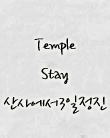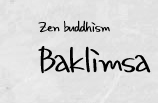Question:Would you tell me what you mean by the practice of Buddhism in daily life?
Nina: One is first confronted with the practice of Buddhism when one sees different customs of the Thais, such as giving food to the monks, paying respect to the Buddha image or reciting the "precepts" on special occasions such as "Uposatha Day" . In the beginning I thought that these customs were mixed with many things which are not essential for the practice of Buddhism. For example, I did not see how the presenting of eggs to the statue of the "Emerald Buddha"could have anything to do with the practice of Buddhism. However, even such popular beliefs can teach us something about the practice of Buddhism. There aremany levels of understanding the Buddha’s teachings. The people who present eggs to the statue of the Buddha express their confidence in him. This is a wholesome act which will bear its fruit accordingly. However, the people who present the eggs may not realize that it is their respect to the Buddha which will bring them a good result and not the eggs presented to him. They may not clearly see which cause will bring them which result. They would receive greater benefit from their act of paying respect to the Buddha if this were done in a more meaningful way. They could, for example, pay respect to the Buddha by abstaining from ill deeds, in serving other people, in learning more about the teachings of the Buddha and in helping other people to understand the teachings as well.
질문: 일상생활에서 부처님의 가르침을 실천한다는 것이 무슨 뜻인지 말씀해 주시겠습니까?
대답: 사람들은 포살일 같은 특별한 의식에서 승려들에게 음식을 공양한다든지 불상에 절을 한다든지 계율을 암송하는 것 등 태국의 다양한 문화를 보면서 불교가 실천되는 것을 경험합니다.
처음에 나는 이러한 관습들이 불교의 실천과 별 중요한 연관이 없는 줄 알았습니다. 예를 들어 에메랄드 불상 앞에 계란을 올리는 행위를 불교의 실천이라고 할 수는 없겠지요. 하지만 그런 흔한 신앙행위조차도 불교의 실천에 관해서 무언가를 우리에게 가르쳐 줍니다.
부처님의 가르침을 이해하는 데는 다양한 레벨이 있습니다. 불상 앞에 계란을 올리는 사람들은 부처님에 대한 자기의 믿음을 표현하는 것이지요. 이것은 선과보가 따라오는 선한 행위입니다. 그러나 부처님을 공경하면 선과보를 받는다는 것을 모르는 사람은 부처님께 계란을 올리지 않겠지요. 그런 사람들은 과보를 가져오는 것에 대해서 잘 모르고 있습니다. 만일 붓다를 공경하는 행위가 좀 더 의미 있는 방식이라면 더 커다란 이익을 얻을 것입니다.
예를 들어 악행을 삼감으로, 선행을 함으로, 혹은 붓다의 가르침을 다른 사람들이 이해할 수 있도록 도움으로서 붓다를 공경하는 행위를 할 수 있습니다.
출처; Buddhism in daily life ;수카또야


















